Records from the Hundred Years War
Records from the Hundred Years War: Journal of the Estates General of Northern France in 1356 and the Address given to Margaret of Anjou on her Entry to Rouen in 1445, in French, illuminated manuscript on vellum [Southern Netherlands, c.1490]
An important witness to both texts, handsomely written and illuminated in the admired Flemish style.
208 x 147mm. ii paper + i (middle section of former pastedown, bound sideways) + 44 leaves + i (bifolium lacking i) + i (former pastedown) + iii paper: 1-58, 64, 19 lines, ruled space: 125 x 94 mm. one-line initials and paragraph marks in blue flourished with red or red flourished with dark blue, two large illuminated initials, one historiated, with full scatter borders (some wear to borders and initials ff.1 and 33, part of end parchment flyleaf excised at top, cutting slightly into the former pastedown). 17th-century British brown calf over pasteboard tooled in blind with a double fillet, recased probably for Henry Pelham Clinton, 4th Duke of Newcastle (1785-1851), his arms gilt on upper cover, title gilt on spine; the lower former pastedown being part of a bifolio from the Sanctoral of a breviary, with red and blue initials, celebrating feasts in June: Sts Marcus and Marcellianus, Gervase and Protasius, and Peter and Paul (joints rubbed, light scuffing to covers).
Provenance:
(1) The decoration and the elegant bâtarde script, favoured at the Burgundian court, indicate an origin in the southern Netherlands, probably in Ghent or Bruges. The style of the initial points more to Ghent. On the first former pastedown a bâtarde hand has written the opening of the Lord’s Prayer and two incomplete Latin tags; on the parchment endleaf the 16th-century hand that foliated the leaves has provided a list of contents, the opening lost with the excised leaf.
(2) 'William Adamson burges of Edinburgh anno 1526': inscribed on the breviary bifolio. Probably William Adamson the Elder, merchant and burgess of Edinburgh (d. by May 1528), whose biography is confused with that that of his son, also William, intermittently bailie of Edinburgh between 1513 and 1536. The father married Jonet Turing, whose kinswoman, Katherine Turing was wife to Patrick Creighton or Crichton of Cranston Riddell. The son married Jonet Napier and in 1542 bought the lands of Craigcrook near Edinburgh (see J. Durkan ed., The Protocol Book of John Foular, 1528-1534, Scottish Record Society, 1985). In 1525 William the Elder was licensed to trade with Flanders; in 1526 he was appointed to retrieve a document conferring the Scottish staple on Middleburg in Zeeland, perhaps the circumstances that brought the book into into Scottish hands (R.K. Hannay, ‘Shipping and the Staple, A.D. 1515-1531’, The Book of the Old Edinburgh Club, 9, 1916, pp.49-77). A different 16th-century hand has written on the final end leaf, verso: 'Monsur de Horsle est en Edinbroucht en la maison de Jacques Hug/Hog prisoner de monsur le cappetyne amene(?) Cranston'. Below in a second 16th-century hand are lines in English opening ffare well fare well that degenerate into pen trials and a doodled profile of a man in a hat. Captain Cranston could be one of the Creightons of Cranston Riddell, Anderson’s wife’s relations and Captains of Edinburgh Castle: Patrick, from 1514 to his death in 1521, or his son, James, 1523-1540; Hug or Hog(g) is a common Scottish name; (de) Horsle or Horsley is a name borne by several gentry families in Northumberland, many of whom served in English armies against Scotland or were involved in Anglo-Scottish relations.
The name ffayrfax, written several times on the former pastedown was not restricted to one family. It is in a 16th-century hand and the y spelling was largely abandoned in the early 17th century, which rules out the antiquarian Colonel Charles Fairfax (1597-1673), uncle of the great Parliamentary General, Thomas, 3rd Lord Fairfax (1612-1671), who added manuscripts to his collection while in Edinburgh 1650-1652. If ever owned by ar member of this family, it was not in the sale of their library, kept at Leeds Castle, Christie’s, 10 January 1831.
(3) Henry Pelham Clinton, 4th Duke of Newcastle (1785-1851): gilt supralibros of his arms within the Order of the Garter, conferred in 1812. He added considerably to the books collected by his grandfather, the 2nd Duke, and in 1833 purchased the library of William Johnes of Hafod (1748-1816), the likely sources of the present lot. Johnes, the translator of Froissart and other French chroniclers, had an impressive collection of manuscripts, renewed after his first library was destroyed by fire in 1807. The Newcastle library was housed at Clumber Park, passing by descent until sold in 1937-1938 by the future 9th Duke of Newcastle (1907-1988): Sotheby’s, The Clumber Library […], IV, 14-16 February 1938, lot 1297, bought by Maggs, Catalogue 697, 1940, p.39.
(4) James Patrick Ronaldson Lyell (1871-1949): his book label inside upper cover, bought from Maggs 29 May 1941, pencil note inside upper cover. From the mid-1930s Lyell rapidly built up a significant manuscript collection. The Bodleian Library, left the choice of 100 from his c.250 manuscripts, purchased a further eleven from his executors, who sold the present lot to Quaritch, Catalogue 699, 1952, no 49: cutting pasted on first front flyleaf (A.C. de la Mare, Catalogue of the collection of medieval manuscripts bequeathed to the Bodleian Library, Oxford by James P. R. Lyell, 1971, this ms p.xviii).
(5) Sotheby’s, 19 June 1990, lot 96.
(6) The Schøyen Collection, MS 678.
Content:
Journal of the Estates-General of Northern France (Langue d’oil) held in Paris, October, 1356, opening Coppie. Comme nostre treschier et tresredoubte sire le duc de normandie […] quilz eussent acquittez leur loyaultez se ledit conseil ne lui donnassent, ff.1-32v; Address from the city of Rouen to Margaret of Anjou, Queen of England and France, when she made her Entry 22 March 1445, opening Paix et honneur Sante Joye et leesse Sens loz et pris vertu bien ordonee A la tres haulte excellente princesse […] and ending […] vous vueille octroyer perfection et brief accomplissement de tout ce que vostre tres noble cueur desire Amen ff.33-44v.
The Estates-General were summoned to meet in Paris on 15 October 1356 by the young Charles, Duke of Normandy and Dauphin of Viennois, as Lieutenant for his father John II, taken prisoner by the English at the disastrous battle of Poitiers on 19 September. The future Charles V needed men and money to continue the war, while the majority of the Estates, the three states of clergy, nobility and burgesses, were willing to levy taxes but wanted redress of their grievances against royal ministers, assurances of a permanent role for their representatives in matters of state and the release of the trouble-making Charles the Bad, King of Navarre. Their demands, presented by Jean de Craon, Archbishop of Reims, were unacceptable to the Dauphin, who initially temporised and then, on 3 November, rendered the Estates powerless by leaving Paris. Despite its failure, the Estates’ bid for a greater role in government remains a significant moment in French history.
The Journal, not an official record despite its subsequent title, is the fullest record of this important meeting. The earliest surviving copy from the first half of the 15th century is incomplete, opening at the end of f.17v of the Schøyen manuscript (Paris BnF, ms fr. 5273 ff.15-21). The earliest complete copy is in a miscellany assembled for Sir Robert Cotton (1571-1631), together with the address to Margaret of Anjou, written and illuminated to the same format, and so presumably both dating from after 1445 (London, BL, Cotton ms Titus D XII, ff.58-74). Since the other copies of the Journal date from the 17th century onwards, the Cotton manuscript was the basis of the edition published by R. Delachenal (‘Journal des États généraux réunis à Paris au mois d’octobre 1356’, Nouvelle revue historique de droit français et étranger, 24, 1900, pp.415–465; see also E. Faral, ‘Robert le Coq et les États genéraux d’octobre 1356’, Revue historique de droit français et étranger, 23, 1945, pp.171–214).
Margaret of Anjou (1430-1482) is not explicitly named in the address from the city of Rouen, which lauds the virtues of a French princess who is marrying the King of England and France, a marriage that will bring longed for peace to both realms. From the exposition on the virtues symbolised by the flower called marguerite, the daisy, it is evident that the new Queen is Margaret, daughter of René, Duke of Anjou, titular King of Naples and Jerusalem, who was treated as Queen of England, and of France by the English, from the date of her proxy marriage to Henry VI in May 1444. The accompanying Truce of Tours meant that Margaret was heralded as a bringer of peace in England and English-held France, essentially by this date Gascony, Maine and Normandy, through which she passed on her way to England. Rouen, the capital of the duchy, staged a formal welcome with an address that stressed the need for peace and the importance of Margaret’s role in ending the wars. Intended to secure her good will, the speech was reinforced by the customary gift of metalwork, described in the text as a petit don, little gift, consisting of thirty-six pieces of tableware in a leather case painted with Rouen’s Lamb of God emblem and Margaret’s daisy (C. Reynolds, ‘The Shrewsbury Book, BL Royal ms 15 E VI’, Medieval Art, Architecture and Archaeology in Rouen, British Archaeological Association, XII, 1993, pp.109-116). Rouen may have regretted this investment, since the town surrendered to Charles VII of France only four and a half years later, while Margaret herself became characterised as the antithesis of a peace bringer. Taking an active part in the Wars of the Roses until the deaths of her only son and husband in 1471, she was twice forced from England and died an impoverished exile in France.
The Address has not been edited. The only other copy known to us is that in the Cotton manuscript, also paired with the 1356 Journal. The borders opening the two Cotton texts indicate a shared French origin close to 1445, probably in Rouen; names and inscriptions show the two were in England from an early date (C. Tite, The Early Records of Sir Robert Cotton’s Library, 2003, p.199). Ownership by Margaret herself seems unlikely: a presentation copy of the Address would presumably have been personalised for recipient and donor and would not have included the Journal. The pairing of the texts suggests some connection between the Cotton and Schøyen copies. From a sampling of the Journal text, variations from Cotton in Schøyen seem to go beyond scribal error or choice, only sometimes coinciding with variants in the earliest fragmentary copy; generally, Schøyen seems closer to Cotton than to the edition prepared from two later manuscripts (Recueil général des anciennes lois françaises, IV, 1821, pp.771-795). Preliminary comparison of the Address to Margaret suggests a closer correspondence with Cotton. The Schøyen copy would repay further study to elucidate both lost originals.
What prompted the creation of the Schøyen copy in the Southern Netherlands is unknown. Flanders west of the Scheldt was part of the Kingdom of France so that Lille had sent representatives to the 1356 Estates; the Netherlands had close, if variable, commercial and political ties with England, whether Lancastrian or Yorkist. Despite his marriage to Margaret of York in 1468, Charles the Bold, Duke of Burgundy, was very aware of his kinship with Henry VI: his maternal grandmother was a sister of Henry IV. The future Duke welcomed Margaret of Anjou, when she fled England in 1463, and the Burgundian ducal chronicler, Georges Chastellain, wrote a continuation of Boccaccio’s Fall of Princes in 1465 to console the Queen brought so low by Fortune’s wheel. At least sixteen manuscripts of Le temple de Bocace survive, dating into the 16th century, showing that she was not forgotten in court and literary circles. Rouen’s address to Margaret had perhaps acquired piquancy as marking the start of a bright future that ended in the dark loss of son, husband and kingdom.
Illumination:
The small scale of the historiated initial makes precise attribution difficult. The Workshop of the Master of the First Prayerbook of Maximilian, active in Ghent and named from the manuscript made for the future Emperor (Vienna, ÖNB cod. 1907) produced similarly stocky figures, for instance in the Breviary of Eleanor Portugal dated 1500-1510 (New York, Morgan Library, ms M.52; T. Kren and S. McKendrick, Illuminating the Renaissance, 2003, pp.321-324). The costume indicates an earlier date for the Schøyen manuscript; the attractive scatter borders were popular well into the 16th century, having rapidly become a hallmark of Southern Netherlandish illumination after their introduction in the 1470s. The subject of the historiated initial: the future Charles V receives the demands of the Estates from Jean de Craon, Archbishop of Reims; in the background, his father John II, crowned and in a surcoat of gold fleur de lys on blue, is seen behind the bars of his English prison, f.1.
Records from the Hundred Years War
Records from the Hundred Years War: Journal of the Estates General of Northern France in 1356 and the Address given to Margaret of Anjou on her Entry to Rouen in 1445, in French, illuminated manuscript on vellum [Southern Netherlands, c.1490]
An important witness to both texts, handsomely written and illuminated in the admired Flemish style.
208 x 147mm. ii paper + i (middle section of former pastedown, bound sideways) + 44 leaves + i (bifolium lacking i) + i (former pastedown) + iii paper: 1-58, 64, 19 lines, ruled space: 125 x 94 mm. one-line initials and paragraph marks in blue flourished with red or red flourished with dark blue, two large illuminated initials, one historiated, with full scatter borders (some wear to borders and initials ff.1 and 33, part of end parchment flyleaf excised at top, cutting slightly into the former pastedown). 17th-century British brown calf over pasteboard tooled in blind with a double fillet, recased probably for Henry Pelham Clinton, 4th Duke of Newcastle (1785-1851), his arms gilt on upper cover, title gilt on spine; the lower former pastedown being part of a bifolio from the Sanctoral of a breviary, with red and blue initials, celebrating feasts in June: Sts Marcus and Marcellianus, Gervase and Protasius, and Peter and Paul (joints rubbed, light scuffing to covers).
Provenance:
(1) The decoration and the elegant bâtarde script, favoured at the Burgundian court, indicate an origin in the southern Netherlands, probably in Ghent or Bruges. The style of the initial points more to Ghent. On the first former pastedown a bâtarde hand has written the opening of the Lord’s Prayer and two incomplete Latin tags; on the parchment endleaf the 16th-century hand that foliated the leaves has provided a list of contents, the opening lost with the excised leaf.
(2) 'William Adamson burges of Edinburgh anno 1526': inscribed on the breviary bifolio. Probably William Adamson the Elder, merchant and burgess of Edinburgh (d. by May 1528), whose biography is confused with that that of his son, also William, intermittently bailie of Edinburgh between 1513 and 1536. The father married Jonet Turing, whose kinswoman, Katherine Turing was wife to Patrick Creighton or Crichton of Cranston Riddell. The son married Jonet Napier and in 1542 bought the lands of Craigcrook near Edinburgh (see J. Durkan ed., The Protocol Book of John Foular, 1528-1534, Scottish Record Society, 1985). In 1525 William the Elder was licensed to trade with Flanders; in 1526 he was appointed to retrieve a document conferring the Scottish staple on Middleburg in Zeeland, perhaps the circumstances that brought the book into into Scottish hands (R.K. Hannay, ‘Shipping and the Staple, A.D. 1515-1531’, The Book of the Old Edinburgh Club, 9, 1916, pp.49-77). A different 16th-century hand has written on the final end leaf, verso: 'Monsur de Horsle est en Edinbroucht en la maison de Jacques Hug/Hog prisoner de monsur le cappetyne amene(?) Cranston'. Below in a second 16th-century hand are lines in English opening ffare well fare well that degenerate into pen trials and a doodled profile of a man in a hat. Captain Cranston could be one of the Creightons of Cranston Riddell, Anderson’s wife’s relations and Captains of Edinburgh Castle: Patrick, from 1514 to his death in 1521, or his son, James, 1523-1540; Hug or Hog(g) is a common Scottish name; (de) Horsle or Horsley is a name borne by several gentry families in Northumberland, many of whom served in English armies against Scotland or were involved in Anglo-Scottish relations.
The name ffayrfax, written several times on the former pastedown was not restricted to one family. It is in a 16th-century hand and the y spelling was largely abandoned in the early 17th century, which rules out the antiquarian Colonel Charles Fairfax (1597-1673), uncle of the great Parliamentary General, Thomas, 3rd Lord Fairfax (1612-1671), who added manuscripts to his collection while in Edinburgh 1650-1652. If ever owned by ar member of this family, it was not in the sale of their library, kept at Leeds Castle, Christie’s, 10 January 1831.
(3) Henry Pelham Clinton, 4th Duke of Newcastle (1785-1851): gilt supralibros of his arms within the Order of the Garter, conferred in 1812. He added considerably to the books collected by his grandfather, the 2nd Duke, and in 1833 purchased the library of William Johnes of Hafod (1748-1816), the likely sources of the present lot. Johnes, the translator of Froissart and other French chroniclers, had an impressive collection of manuscripts, renewed after his first library was destroyed by fire in 1807. The Newcastle library was housed at Clumber Park, passing by descent until sold in 1937-1938 by the future 9th Duke of Newcastle (1907-1988): Sotheby’s, The Clumber Library […], IV, 14-16 February 1938, lot 1297, bought by Maggs, Catalogue 697, 1940, p.39.
(4) James Patrick Ronaldson Lyell (1871-1949): his book label inside upper cover, bought from Maggs 29 May 1941, pencil note inside upper cover. From the mid-1930s Lyell rapidly built up a significant manuscript collection. The Bodleian Library, left the choice of 100 from his c.250 manuscripts, purchased a further eleven from his executors, who sold the present lot to Quaritch, Catalogue 699, 1952, no 49: cutting pasted on first front flyleaf (A.C. de la Mare, Catalogue of the collection of medieval manuscripts bequeathed to the Bodleian Library, Oxford by James P. R. Lyell, 1971, this ms p.xviii).
(5) Sotheby’s, 19 June 1990, lot 96.
(6) The Schøyen Collection, MS 678.
Content:
Journal of the Estates-General of Northern France (Langue d’oil) held in Paris, October, 1356, opening Coppie. Comme nostre treschier et tresredoubte sire le duc de normandie […] quilz eussent acquittez leur loyaultez se ledit conseil ne lui donnassent, ff.1-32v; Address from the city of Rouen to Margaret of Anjou, Queen of England and France, when she made her Entry 22 March 1445, opening Paix et honneur Sante Joye et leesse Sens loz et pris vertu bien ordonee A la tres haulte excellente princesse […] and ending […] vous vueille octroyer perfection et brief accomplissement de tout ce que vostre tres noble cueur desire Amen ff.33-44v.
The Estates-General were summoned to meet in Paris on 15 October 1356 by the young Charles, Duke of Normandy and Dauphin of Viennois, as Lieutenant for his father John II, taken prisoner by the English at the disastrous battle of Poitiers on 19 September. The future Charles V needed men and money to continue the war, while the majority of the Estates, the three states of clergy, nobility and burgesses, were willing to levy taxes but wanted redress of their grievances against royal ministers, assurances of a permanent role for their representatives in matters of state and the release of the trouble-making Charles the Bad, King of Navarre. Their demands, presented by Jean de Craon, Archbishop of Reims, were unacceptable to the Dauphin, who initially temporised and then, on 3 November, rendered the Estates powerless by leaving Paris. Despite its failure, the Estates’ bid for a greater role in government remains a significant moment in French history.
The Journal, not an official record despite its subsequent title, is the fullest record of this important meeting. The earliest surviving copy from the first half of the 15th century is incomplete, opening at the end of f.17v of the Schøyen manuscript (Paris BnF, ms fr. 5273 ff.15-21). The earliest complete copy is in a miscellany assembled for Sir Robert Cotton (1571-1631), together with the address to Margaret of Anjou, written and illuminated to the same format, and so presumably both dating from after 1445 (London, BL, Cotton ms Titus D XII, ff.58-74). Since the other copies of the Journal date from the 17th century onwards, the Cotton manuscript was the basis of the edition published by R. Delachenal (‘Journal des États généraux réunis à Paris au mois d’octobre 1356’, Nouvelle revue historique de droit français et étranger, 24, 1900, pp.415–465; see also E. Faral, ‘Robert le Coq et les États genéraux d’octobre 1356’, Revue historique de droit français et étranger, 23, 1945, pp.171–214).
Margaret of Anjou (1430-1482) is not explicitly named in the address from the city of Rouen, which lauds the virtues of a French princess who is marrying the King of England and France, a marriage that will bring longed for peace to both realms. From the exposition on the virtues symbolised by the flower called marguerite, the daisy, it is evident that the new Queen is Margaret, daughter of René, Duke of Anjou, titular King of Naples and Jerusalem, who was treated as Queen of England, and of France by the English, from the date of her proxy marriage to Henry VI in May 1444. The accompanying Truce of Tours meant that Margaret was heralded as a bringer of peace in England and English-held France, essentially by this date Gascony, Maine and Normandy, through which she passed on her way to England. Rouen, the capital of the duchy, staged a formal welcome with an address that stressed the need for peace and the importance of Margaret’s role in ending the wars. Intended to secure her good will, the speech was reinforced by the customary gift of metalwork, described in the text as a petit don, little gift, consisting of thirty-six pieces of tableware in a leather case painted with Rouen’s Lamb of God emblem and Margaret’s daisy (C. Reynolds, ‘The Shrewsbury Book, BL Royal ms 15 E VI’, Medieval Art, Architecture and Archaeology in Rouen, British Archaeological Association, XII, 1993, pp.109-116). Rouen may have regretted this investment, since the town surrendered to Charles VII of France only four and a half years later, while Margaret herself became characterised as the antithesis of a peace bringer. Taking an active part in the Wars of the Roses until the deaths of her only son and husband in 1471, she was twice forced from England and died an impoverished exile in France.
The Address has not been edited. The only other copy known to us is that in the Cotton manuscript, also paired with the 1356 Journal. The borders opening the two Cotton texts indicate a shared French origin close to 1445, probably in Rouen; names and inscriptions show the two were in England from an early date (C. Tite, The Early Records of Sir Robert Cotton’s Library, 2003, p.199). Ownership by Margaret herself seems unlikely: a presentation copy of the Address would presumably have been personalised for recipient and donor and would not have included the Journal. The pairing of the texts suggests some connection between the Cotton and Schøyen copies. From a sampling of the Journal text, variations from Cotton in Schøyen seem to go beyond scribal error or choice, only sometimes coinciding with variants in the earliest fragmentary copy; generally, Schøyen seems closer to Cotton than to the edition prepared from two later manuscripts (Recueil général des anciennes lois françaises, IV, 1821, pp.771-795). Preliminary comparison of the Address to Margaret suggests a closer correspondence with Cotton. The Schøyen copy would repay further study to elucidate both lost originals.
What prompted the creation of the Schøyen copy in the Southern Netherlands is unknown. Flanders west of the Scheldt was part of the Kingdom of France so that Lille had sent representatives to the 1356 Estates; the Netherlands had close, if variable, commercial and political ties with England, whether Lancastrian or Yorkist. Despite his marriage to Margaret of York in 1468, Charles the Bold, Duke of Burgundy, was very aware of his kinship with Henry VI: his maternal grandmother was a sister of Henry IV. The future Duke welcomed Margaret of Anjou, when she fled England in 1463, and the Burgundian ducal chronicler, Georges Chastellain, wrote a continuation of Boccaccio’s Fall of Princes in 1465 to console the Queen brought so low by Fortune’s wheel. At least sixteen manuscripts of Le temple de Bocace survive, dating into the 16th century, showing that she was not forgotten in court and literary circles. Rouen’s address to Margaret had perhaps acquired piquancy as marking the start of a bright future that ended in the dark loss of son, husband and kingdom.
Illumination:
The small scale of the historiated initial makes precise attribution difficult. The Workshop of the Master of the First Prayerbook of Maximilian, active in Ghent and named from the manuscript made for the future Emperor (Vienna, ÖNB cod. 1907) produced similarly stocky figures, for instance in the Breviary of Eleanor Portugal dated 1500-1510 (New York, Morgan Library, ms M.52; T. Kren and S. McKendrick, Illuminating the Renaissance, 2003, pp.321-324). The costume indicates an earlier date for the Schøyen manuscript; the attractive scatter borders were popular well into the 16th century, having rapidly become a hallmark of Southern Netherlandish illumination after their introduction in the 1470s. The subject of the historiated initial: the future Charles V receives the demands of the Estates from Jean de Craon, Archbishop of Reims; in the background, his father John II, crowned and in a surcoat of gold fleur de lys on blue, is seen behind the bars of his English prison, f.1.
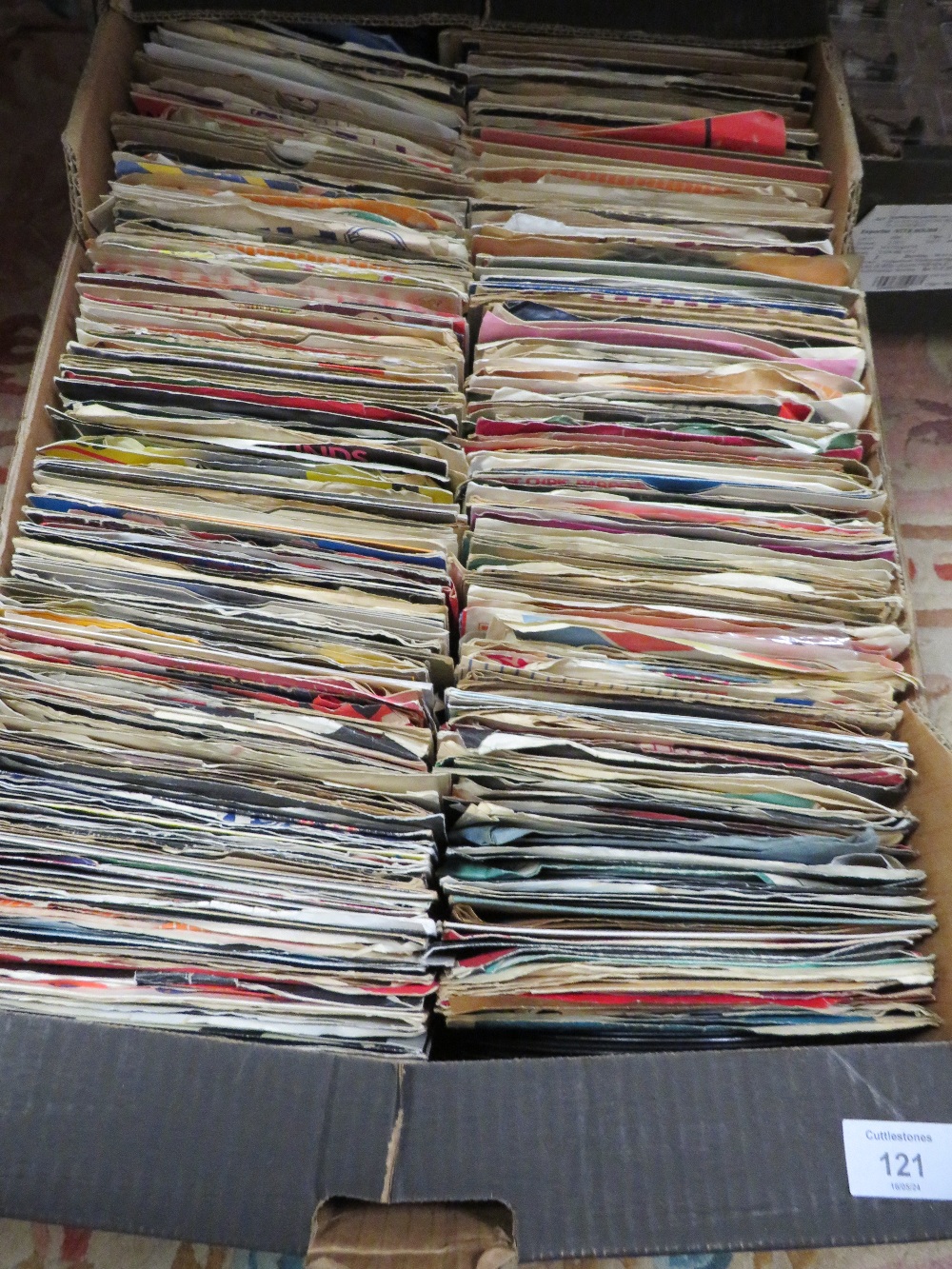


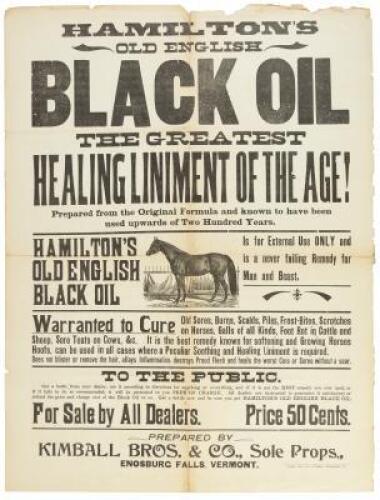
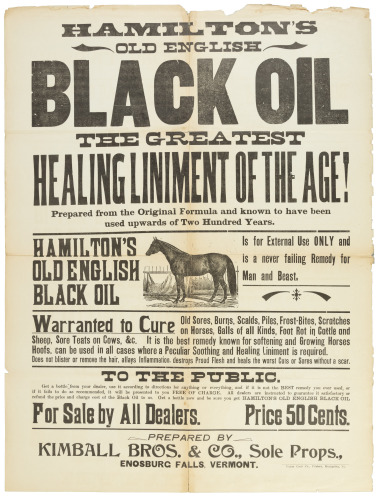






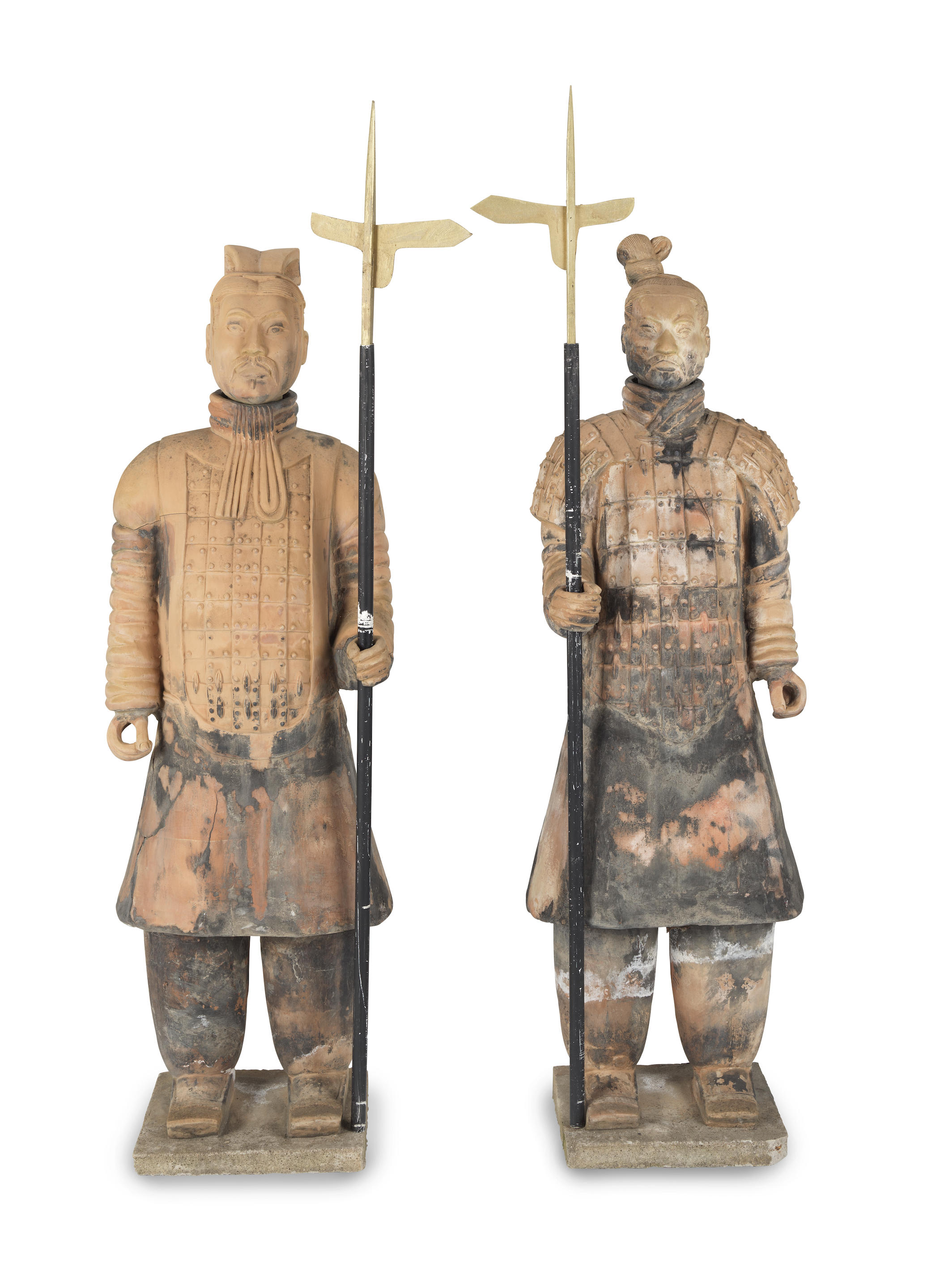
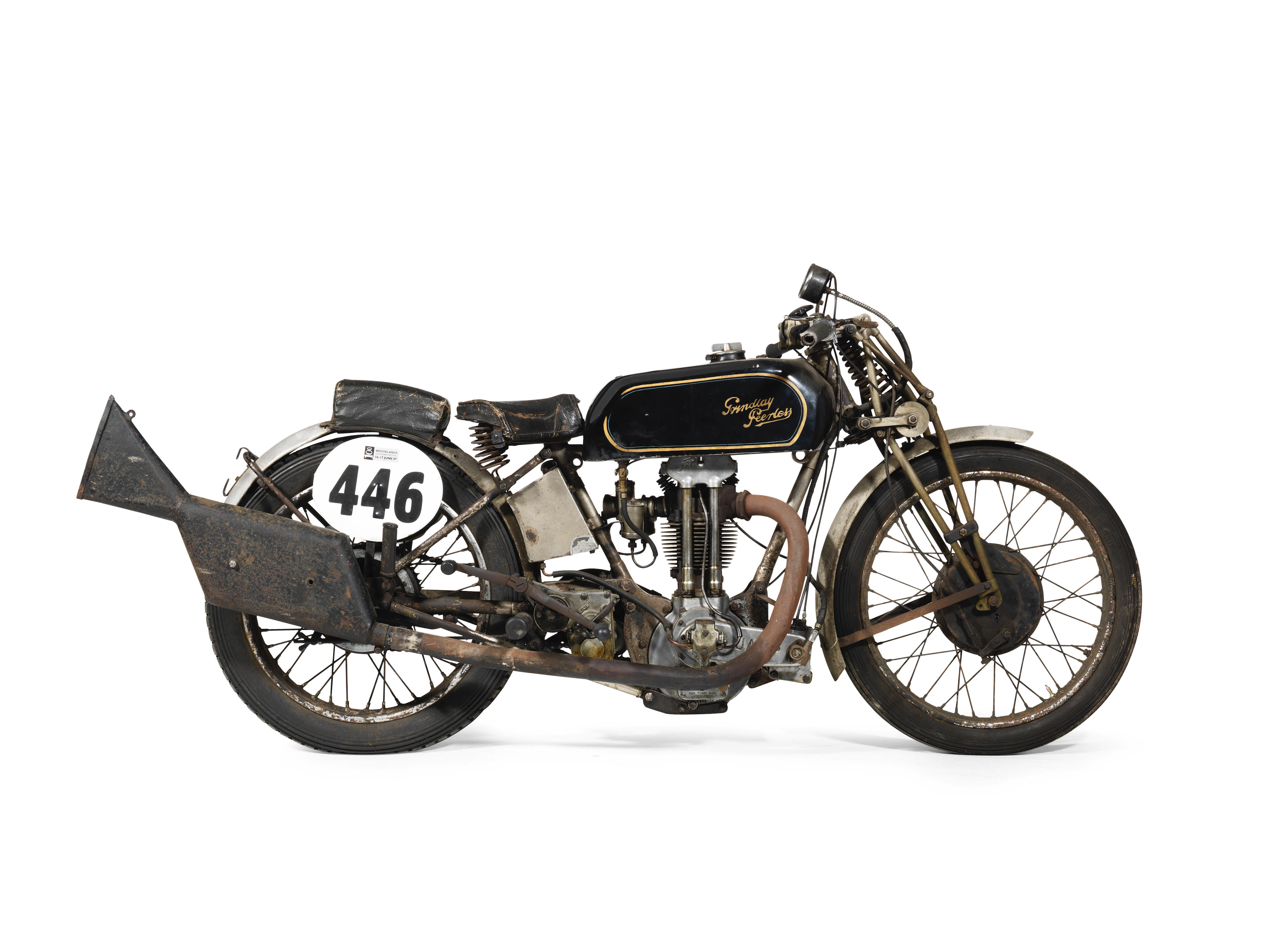
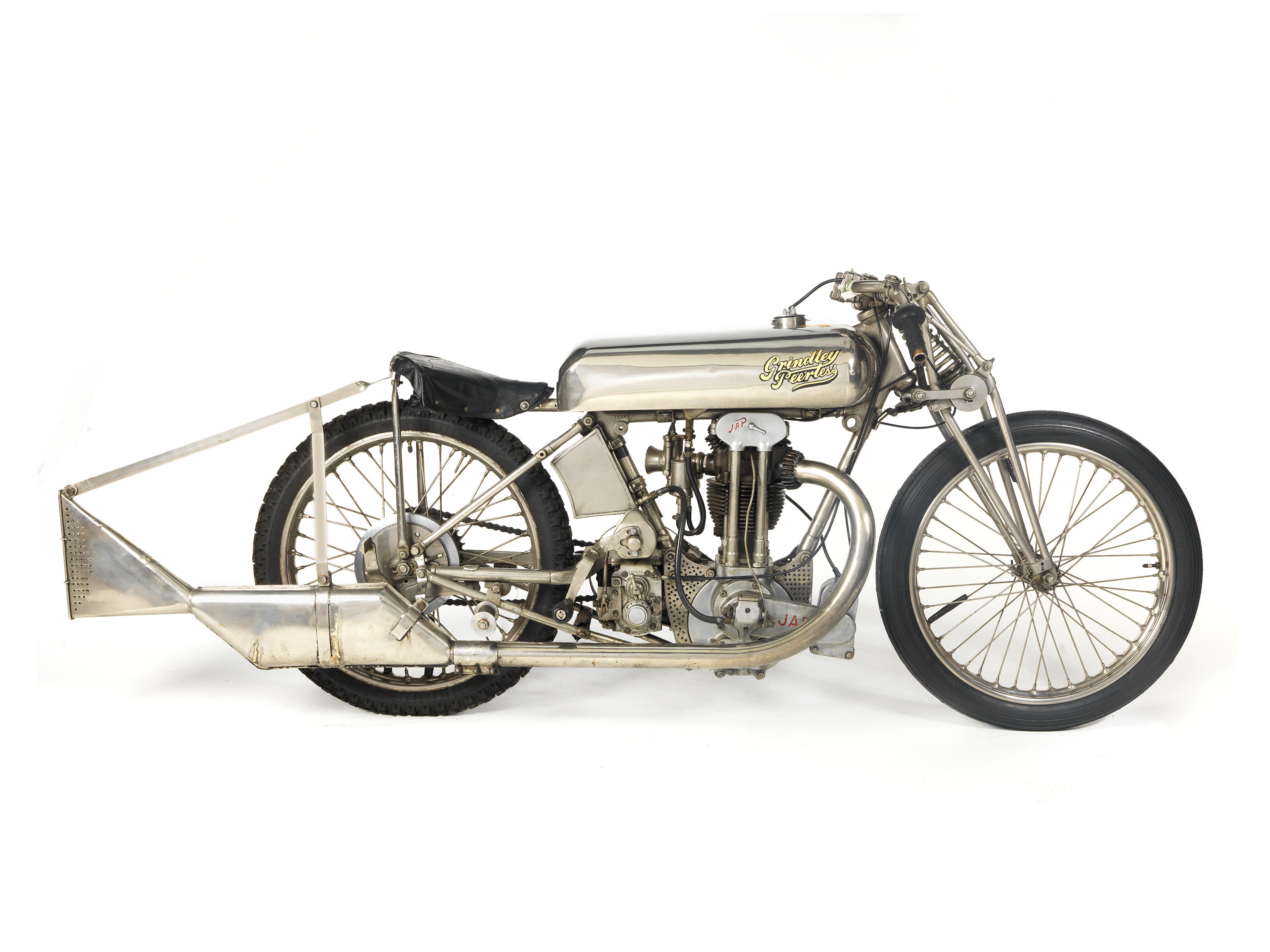

Try LotSearch and its premium features for 7 days - without any costs!
Be notified automatically about new items in upcoming auctions.
Create an alert